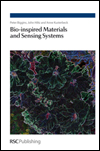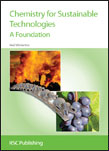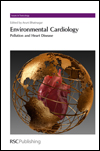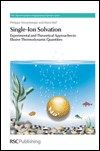 A new book in the RSC Theoretical and Computational Chemistry Series, Single- Ion Solvation provides a clear understanding of the concepts, definitions and difficulties underlying the problem of determining single-ion solvation free energies via experiment or theory. Written by Philippe Hunenberger and Maria Reif, the book is primarily aimed at researchers (professors, postgraduates, graduates, and industrial researchers) concerned with processes involving ionic solvation properties (these are ubiquitous, eg. in physical/organic/analytical chemistry, electrochemistry, biochemistry, pharmacology, geology, and ecology). Because of the concept definitions and data compilations it contains, it is also a useful reference book to have in a university library. Finally, it may be of general interest to anyone wanting to learn more about ions and solvation. For more information see http://www.rsc.org/shop/books/2011/9781847551870.asp.
A new book in the RSC Theoretical and Computational Chemistry Series, Single- Ion Solvation provides a clear understanding of the concepts, definitions and difficulties underlying the problem of determining single-ion solvation free energies via experiment or theory. Written by Philippe Hunenberger and Maria Reif, the book is primarily aimed at researchers (professors, postgraduates, graduates, and industrial researchers) concerned with processes involving ionic solvation properties (these are ubiquitous, eg. in physical/organic/analytical chemistry, electrochemistry, biochemistry, pharmacology, geology, and ecology). Because of the concept definitions and data compilations it contains, it is also a useful reference book to have in a university library. Finally, it may be of general interest to anyone wanting to learn more about ions and solvation. For more information see http://www.rsc.org/shop/books/2011/9781847551870.asp.
Archive for the ‘New Releases’ Category
Single-Ion Solvation: Experimental and Theoretical Approaches to Elusive Thermodynamic Quantities
Biophysical Approaches Determining Ligand Binding to Biomolecular Targets
The latest book in the RSC Biomolecular Sciences Series provides a complete overview of current techniques to identify ligands, how to characterise their binding sites and details on understanding binding mechanisms. Edited by Alberto Podjarny, CNRS, Strasbourg, Annick Dejaegere and Bruno Kieffer, this book is suitable for biomolecular scientists at graduate or post-doctoral level in academia and industry and biologists and chemists will also find it a useful introduction to the techniques available. For more details see http://www.rsc.org/shop/books/2011/9781849730099.asp
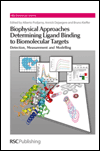
Structural and Catalytic Roles of Metal Ions in RNA
This book, written by 28 internationally recognized experts, provides a most up-to-date view and it is thus of special relevance for colleagues teaching courses in biological inorganic chemistry and for researchers dealing, e.g., with nucleic acids, gene expression, and enzymology, but also for those in analytical and bioinorganic chemistry or biophysics. For more information see http://www.rsc.org/shop/books/2011/9781849730945.asp.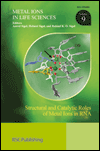
The Organic Chemistry of Isotopic Labelling
Isotopic labelling is a precise tool used in many chemical, spectroscopic and biochemical investigations. This textbook introduces the reader to a variety of methods, while advising on the best synthetic strategies to adopt when labelling.
Aimed at the chemist and biochemist alike, this book benefits from the Professor Hanson’s 50 years of experience of isotopic labelling in natural product biosynthesis. The book is written in the easy and informative style first seen in Professor Hanson’s contribution to Tutorial Chemistry Texts. See http://www.rsc.org/shop/books/2011/9781849731881.asp for more details about this book.
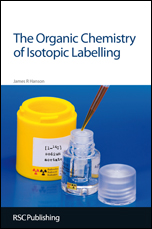
Using Physical Chemistry in Biological studies?
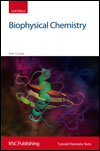 This fully revised and expanded second edition of a highly popular book covers the physical chemistry of biological macromolecules and how to study it using up-to-date experimental techniques. Alan Cooper is a Professor of Biophysical Chemistry at Glasgow University and the level he has adopted in this tutorial text is suitable for early undergraduate years in chemical or physical sciences, however, the book can also act as a basis for more advanced study. Students in other areas of the biological sciences will also appreciate the less intimidating approach to physical chemistry in the book. For more details see http://www.rsc.org/shop/books/2011/9781849730815.asp
This fully revised and expanded second edition of a highly popular book covers the physical chemistry of biological macromolecules and how to study it using up-to-date experimental techniques. Alan Cooper is a Professor of Biophysical Chemistry at Glasgow University and the level he has adopted in this tutorial text is suitable for early undergraduate years in chemical or physical sciences, however, the book can also act as a basis for more advanced study. Students in other areas of the biological sciences will also appreciate the less intimidating approach to physical chemistry in the book. For more details see http://www.rsc.org/shop/books/2011/9781849730815.asp
Can scientists and engineers replicate Nature and develop systems that operate in extreme environments?
First book on the catalysis to refine syncrude to transportation fuels
 Written by Arno De Klerk and Edward Furimsky, Catalysis in the Refining of Fischer-Tropsch Syncrude provides the first account of the literature (journal and patent) on the catalysis needed to refine syncrude to transportation fuels. It specifically highlights the impact of oxygenates and how oxygenates affect selectivity and deactivation. This aspect is also related to the refining of biomass derived liquids. Topics covered include: dimerisation / oligomerisation, isomerisation / hydroisomerisation, catalytic cracking / hydrocracking and hydrogenation, catalytic reforming, aromatic alkylation, etherification, dehydration, and some oxygenate and wax specific conversions.
Written by Arno De Klerk and Edward Furimsky, Catalysis in the Refining of Fischer-Tropsch Syncrude provides the first account of the literature (journal and patent) on the catalysis needed to refine syncrude to transportation fuels. It specifically highlights the impact of oxygenates and how oxygenates affect selectivity and deactivation. This aspect is also related to the refining of biomass derived liquids. Topics covered include: dimerisation / oligomerisation, isomerisation / hydroisomerisation, catalytic cracking / hydrocracking and hydrogenation, catalytic reforming, aromatic alkylation, etherification, dehydration, and some oxygenate and wax specific conversions.
Further information can be found at
All you need to know about the ‘Chemistry of the Solar System’
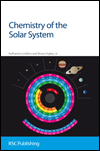 This book is an appealing, concise, and factual account of the chemistry of the solar system. It includes basic facts about the chemical composition of the different bodies in the solar system, the major chemical processes involved in the formation of the Sun, planets, and small objects, and the chemical processes that determine their current chemical make-up. Written by Katharina Lodders, Research Professor and Bruce Fegley, Jr., Professor of Planetary Sciences both from the Department of Earth & Planetary Sciences at Washington University in St. Louis, MO, USA, this book promises to be very popular with student, professional researchers in academia and government, college professors, and postgraduate fellows. For further information see http://www.rsc.org/shop/books/2010/9780854041282.asp
This book is an appealing, concise, and factual account of the chemistry of the solar system. It includes basic facts about the chemical composition of the different bodies in the solar system, the major chemical processes involved in the formation of the Sun, planets, and small objects, and the chemical processes that determine their current chemical make-up. Written by Katharina Lodders, Research Professor and Bruce Fegley, Jr., Professor of Planetary Sciences both from the Department of Earth & Planetary Sciences at Washington University in St. Louis, MO, USA, this book promises to be very popular with student, professional researchers in academia and government, college professors, and postgraduate fellows. For further information see http://www.rsc.org/shop/books/2010/9780854041282.asp
Chemistry for Sustainable Technologies: A Foundation
Written by Neil Winterton, University of Liverpool this unique book provides an interdisciplinary introduction to sustainability issues in the context of chemistry and chemical technology, including engineering. For further information see http://www.rsc.org/shop/books/2010/9781847558138.asp
Environmental Cardiology
Now Published in the Issues in Toxicology Series
Environmental Cardiology: Pollution and Heart Disease
Edited by Aruni Bhatnagar, University of Louisville, USA
The first landmark publication to provide a comprehensive multidisciplinary review on the emerging field of environmental cardiology and current research linking pollutant exposure to heart disease. The book begins with an introductory chapter on the environmental basis of cardiovascular disease and the role of the environment in evolution. It provides a new classification for the different categories of the human environment and provides and in-depth analysis of the role of the natural, social and personal environments in modifying and transmitting the risk for heart disease. Subsequent chapters discuss how exposure to particular air pollutants, vehicular exhaust, manufactured nanoparticles and pollutants such as metals, arsenic and environmental aldehydes affect the risk of developing cardiovascular disease. Both experimental and epidemiological evidence are discussed as well as the impact of exposure to air pollution on hypertension, atherogenesis, ischemic heart disease and heart failure.
The book is essential reading for cardiologists, epidemiologists, urban planners and pollution control specialists.











